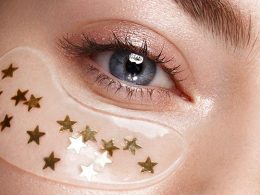Introduction:
Hair is not just a fashion statement; it’s a reflection of our overall health and well-being. One common concern that many women face is dry and dehydrated hair. Understanding the science behind hair hydration is essential in finding effective solutions to nourish and restore vitality to our locks. In this feature, we delve into the key aspects of hair hydration, exploring the causes of dryness, debunking myths, and providing expert advice to help every woman achieve luscious, hydrated hair.
1. The Basics of Hair Hydration:
Hair is composed of three layers: the cuticle, cortex, and medulla. The cuticle, the outermost layer, acts as a protective barrier and determines how well our hair retains moisture. When the cuticle is damaged or lifted, the hair becomes more susceptible to dryness and breakage.
2. The Role of Sebum:
Sebum, the natural oil produced by our scalp, plays a crucial role in hair hydration. It helps to lubricate and moisturize the hair, keeping it supple and shiny. However, excessive sebum production or improper scalp care can lead to greasy roots and dry ends.
3. Environmental Factors:
External factors such as sun exposure, pollution, and humidity can strip the hair of its natural moisture. UV rays, for instance, break down the protein structure of the hair, causing dryness and brittleness. Understanding these environmental influences can help us make informed choices to protect and hydrate our hair.
4. The Impact of Heat Styling:
Excessive heat styling, including blow drying, flat ironing, and curling, can deplete the hair’s moisture and weaken its structure. Heat damages the cuticle, leading to loss of hydration and increased frizz. Using heat protectant products and minimizing heat exposure are vital steps in maintaining hair hydration.
5. Debunking Hair Hydration Myths:
There are various misconceptions surrounding hair hydration. One common myth is that applying conditioner to the scalp can make it oily. In reality, applying conditioner to the lengths and ends is crucial to replenishing moisture without overburdening the scalp. We debunk such myths to provide accurate information for better hair care practices.
6. Nourishing Ingredients:
Understanding the ingredients in hair care products is essential for choosing hydrating formulations. Ingredients like hyaluronic acid, shea butter, aloe vera, and natural oils such as coconut, argan, and jojoba oil have hydrating properties that can effectively restore moisture to dry hair.
7. Hydrating Hair Care Routine:
Developing a consistent hair care routine tailored to your hair type is essential for maintaining hydration. This includes using hydrating shampoos and conditioners, incorporating deep conditioning treatments, and minimizing heat styling. Regular trims to get rid of split ends also contribute to overall hair health.
8. Expert Advice:
We consult renowned hair experts to provide insights and tips on how to unlock the science of hair hydration. Experts share their knowledge on product recommendations, in-salon treatments, and lifestyle changes that can promote hydrated hair from within.
Conclusion:
Unlocking the science of hair hydration empowers every woman to take control of her hair’s health and appearance. By understanding the causes of dryness, debunking myths, and following expert advice, we can develop effective hair care routines that restore moisture, promote shine, and achieve luscious, hydrated locks. Embrace the journey to healthier hair and enjoy the confidence that comes with hydrated tresses.
Note: While the information provided in this feature is based on expert advice and scientific knowledge, it’s important to remember that individual hair needs may vary. Consulting a professional hairstylist or trichologist can provide
personalized guidance for your specific hair concerns.












